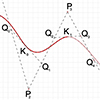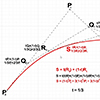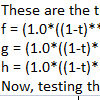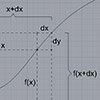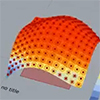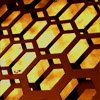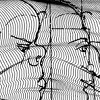This is a short video tutorial on the B-Spline decomposition I studied earlier here. This tutorial demonstrates how to decompose a B-Spline curve into Bezier curves using Rhino. Despite the original Bezier-de Casteljau algorithm requiring degree+1 control points, Rhino allows drawing a degree-3 curve with any number of control points. By examining knot points and dividing segments appropriately, the B-Spline curve can be manually subdivided into Bezier curves. This involves […]
Posts with the keyword parametric
In this short tutorial, I am going to show you how to locate a parametric point on a Bezier curve. This will be a third-degree cubic Bezier curve. So, I start by placing four control points. I name these points from P0 to P3. Then, I connect them by a polyline in order. I explode the polyline into the segments. The parameter of my point must be a number between […]
The parametric curve equations are good examples to demonstrate the bridge between computer-aided design and mathematics. Although useless and pointless, it is a good exercise to extract the curve equations. In this Rhino Python code, I present a generalized equation extractor for Rhino. Rhino curves are good examples de Casteljau and Bézier curves. You can see the mathematical underpinnings of Rhino curves with this exercise: This code asks the user […]
Yes, interesting topics started to reveal themselves, when I dig into the function curves, especially in the parametric representation. The first interesting application is the “derivative”. Nobody in high school told me that the derivative of a function at a given point gives the slope of the graph at that point. Moreover, it is possible to convert the slope value into an angle in degrees, showing the angle of the […]
Here is a short series of videos showing the basic usage of Ladybug tools in a canopy design. So, I prepared this for my Parametric Design Systems elective course. Then, I encouraged my students to design their own canopies utilizing a similar Ladybug workflow in Grasshopper. In this first video, I am building a test surface in Grasshopper. I use the Graph Mapper component to derive 3D points and Interpolated […]
Together with Fulya Akipek and Mehmet Ali Altın, we’re conducting a 4-day workshop at Anadolu University, Eskişehir, between the 1 and 4th of May. We’ll be focusing on Grasshopper + Firefly + RhinoNest (the casual trio), in order to introduce some of the basic concepts of parametric design to students. Materyal dünya, sayısal ortamın olanaklarıyla entegre edildiğinde beklenmedik performanslar açığa çıkabilir. Parametrik modelleme teknikleri, tasarımcıya tekil ürünün ötesinde olasılık setlerinin […]
ARCH 362 COURSE BRIEF (2013) Design computing reflects a focal shift from the singular construction of objects into the relational nature of revealing diversity. Algorithms are mainstream interfaces for the explication of geometric relationships, extending techniques required for such revealing. This course introduces some ways of managing diversity while reasoning about sequential and concurrent; absolute and relational; ordered and chaotic. Students are expected to be familiar with fundamentals of Rhino3D, […]
In the 14th century, Albrecht Dürer basically seems to capture some of the fundamentals of contemporary parametric design. Apart from other thinkers of his age, he refused to accept one single definition of beauty, based on proportions. His famous physiognomical studies reflected very early examples of referential systems that generate diverse design outputs, even a half-century before Descartes published the coordinate system and four centuries before D’Arcy draw the formal […]

